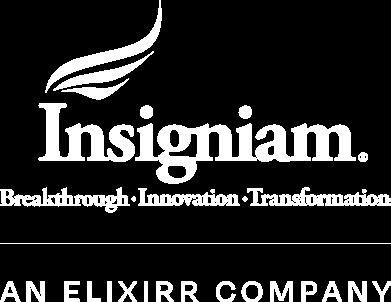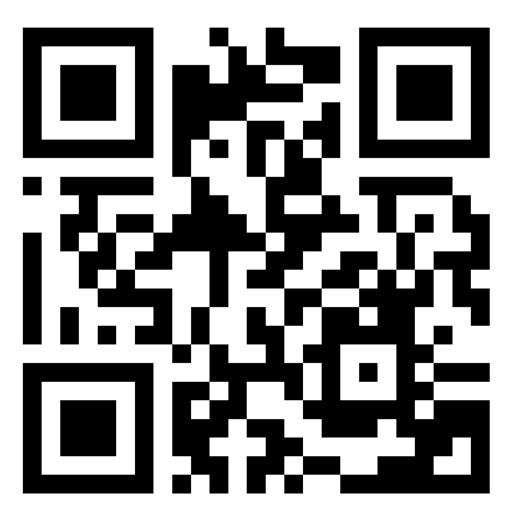




There are many motivators to pursue a breakthrough—but what does it take to actually achieve it?

Founding Partner, Insigniam; Editor-in-Chief, Insigniam Quarterly | IQ; Partner, Elixirr
In your hands is but a sample of the insights, research, and thought leadership that Insigniam has provided to senior executives around the globe for over 35 years—many of whom lead some of the world’s best-run companies.
EDITOR-IN-CHIEF
Shideh Sedgh Bina sbina@insigniam.com
EXECUTIVE DIRECTOR
Jon Kleinman jkleinman@insigniam.com
DIRECTOR OF CONTENT
Jon Ball jball@insigniam.com
IQInsigniamQuarterlyis a production of Insigniam, an Elixirr company. No part of this publication may be reproduced in any form or by any means without prior written permission of the publisher and Insigniam. Printed in the U.S.A. For subscriptions, please visit quarterly.insigniam.com . Insigniam distributes this editorial magazine to share the opinions and insights of companies and their leaders on impactful global business issues. The statements, opinions, and information contained in this publication are those of the individual authors and contributors, not of Insigniam. Insigniam disclaims any responsibility for the accuracy, completeness, topicality, or quality of any statements, opinions, or information provided. Any liability claims against an author or contributor in respect of damage to persons or property caused or alleged to be caused by the use of this publication, including any statements, opinions, or information which are incorrect or incomplete, are therefore excluded. IQInsigniamQuarterly’s inclusion of a company or individual does not indicate that they are a client of Insigniam. Remuneration is not provided for editorial coverage. Individuals appearing in IQInsigniamQuarterlyhave done so with direct consent, or provided consent by a designated authorized agent in addition to being informed of the magazine’s audience and purpose. Both INSIGNIAM QUARTERLY and IQ INSIGNIAM QUARTERLY are registered trademarks in the United States, the European Union, China including Hong Kong, and other countries. Copyright © 2025 by Insigniam, an Elixirr company.
On behalf of our firm, I hope the following pages empower you with fresh perspectives on how to generate breakthrough results while confronting the pressing challenges that lie ahead.
We warmly invite you to contact us about how we can help you achieve the critical and essential aspects of your executive agenda.





What is the North Star for Your Strategic Planning?
A strategic frame can help you chart a course to record growth. Learn how to build one and propel your enterprise into the stratosphere.
Strategy Execution as the Art Of Influencing Chaos
The approach often seems as difficult as herding a room full of cats. But it doesn’t have to be.
Not All Conversations are Created Equal
The five most important conversations within an enterprise—and how they can bridge the digital divide.
The Process for Breakthrough Results
A step-by-step game-plan to ensure your blood, sweat, and tears result in success.


A strategic frame can help you chart a course to the stratosphere. But where to begin?
Strategic planning is an evolving process. Just as our products and services have changed over time, so too have the ways we sell, foster growth and anticipate challenges. The economic crisis of 2008 put every strategist’s weakness on display, demonstrating that even the best-laid plans can quickly unravel.
The ensuing business fallout led one leading consultant to proclaim in a 2010 Wall Street Journal article: “Strategy, as we know it, is dead.”
It’s a provocative statement that begs for refinement. Strategy as it was is dead. Predictability is dead. Rigidity is dead. But innovative strategic planning is very much alive. We refer to the product of that proces as the strategic frame.
The strategic frame — a concept proposed by Allan Cohen in the Strategy & Leadership article “The Strategic Frame: Making Decisions the Produce Results” and further refined by Insigniam — offers a revised approach to planning that accounts for your company’s competitive assets and core beliefs about the future, charts a course toward success, but also allows you to respond to shifting conditions as they happen.

If you’re thinking, “That’s what we’ve been doing,” we disagree. The strategic planning of the past attempted to do all those things, but failed for a few reasons.
Traditional strategic planning plotted a course between point A and point B, with the latter often representing a more lucrative version of the former. Its fundamental purpose was to understand the past and the present external environment in your market or enterprise space and use that insight to predict the future, thereby allowing executives to consistently generate reliable business performance.
That plan’s fatal flaw is that once changes in the external environment render the predictions obsolete, the strategic plan becomes obsolete as well. Organizations felt this acutely when the Great Recession firmly took hold of the economy and consumers’ dollars (and jobs). At the end of the 2008, no one could have predicted the depth and length of the economic crisis. No longer could businesses hang their success on continued economic growth, they had to suffer the blow without a plan to bounce out of it.
There used to be a belief that you could stand in the present, look at what you’ve learned from the past, and extrapolate a desired future position.
In reality, things are not linear. In these days of high technology innovation, political transitions (some peaceful and some not), and lightning-fast communication, the only certainty is that there will be unexpected disruptions and changes in the future.
As any element in the system changes, it in turn changes the environment in ways subtle and substantial. Huge events can have negligible effects and small events can have catastrophic effects. It’s the difference between driving through a parking lot with lots of signs and very clear instructions and lanes and navigating your car around traffic that’s traveling exponentially faster and faster in all different directions.
In the first instance you follow an orderly, stable path, in the latter instance you maneuver to your desired endpoint through the variability with some key levers—steering wheel, mirrors, gas pedal and brakes. The distinction between a strategic frame and a strategic plan is analogous. A strategic plan has a prescribed, set of goals and tactics to accomplish objectives that are reasonable given the past.
With the frame you have your eye on your ambition, a bold, inspiring and often unprecedented objective derived from your purpose; your key levers with which to maneuver are your purpose, your promises, your guiding beliefs and your competitive weapons.
The strategic frame takes all of the above into account. The idea is to identify the organization’s overall purpose and ambition — the “North Star” by which it is navigating — as well as stakeholder promises, guiding beliefs about the future, and strategic assets (often called competitive weapons).
It forces leadership to acknowledge things like disruptive technology and add it to the contingency plan. Think about Blockbuster for a moment. Was the adoption of streaming media a flash-in-the-night kind of event? No, yet the company that owned the market on video rentals wasn’t able to overcome it. The shopping center down the street still has the shadows of Blockbuster’s iconic blue and yellow logo etched in the stucco, a somber reminder that even kings of the marketplace can be dethroned.

Crafting a strategic frame requires introspection, creativity, and a profound curiosity about your business and the market in which it competes. Just as a picture frame has four sides, so too does the strategic frame. Once you address each area, you’ll have a cohesive playing field on which to focus your business choices as the external environment goes through its machinations and gyrations. For example, outsourcing might have been a valuable proposition for your competitors in the past, but does it make sense in your organization to win in the future? Your strategic frame will help you determine that.
Crafting a strategic frame requires introspection, creativity, and a profound curiosity about your business and the market in which it competes. Just as a picture frame has four sides, so too does the strategic frame. Once you address each area, you’ll have a cohesive playing field on which to focus your business choices as the external environment goes through its machinations and gyrations. For example, outsourcing might have been a valuable proposition for your competitors in the past, but does it make sense in your organization to win in the future? Your strategic frame will help you determine that.
Crafting a strategic frame requires introspection, creativity, and a profound curiosity about your business and the market in which it competes. Just as a picture frame has four sides, so too does the strategic frame. Once you address each area, you’ll have a cohesive playing field on which to focus your business choices as the external environment goes through its machinations and gyrations. For example, outsourcing might have been a valuable proposition for your competitors in the past, but does it make sense in your organization to win in the future? Your strategic frame will help you determine that.
PURPOSE AND AMBITION = VELOCITY
Evaluating this segment of the frame will define the playing field and the game in which you’re competing. What’s the point? The purpose is expressed as the “why” of your business — the raison d’être. Enterprise purpose is expressed in many ways, some poetic and some pragmatic. Sam Walton’s intention to make quality products available to ordinary folks, George Merck’s commandment to “bring the best of medicine to each and every person” and Apple’s drive to disrupt the status quo are all examples of companies that achieved great success by having a clear understanding of the originating intention of their enterprise.
Evaluating this segment of the frame will define the playing field and the game in which you’re competing. What’s the point? The purpose is expressed as the “why” of your business — the raison d’être. Enterprise purpose is expressed in many ways, some poetic and some pragmatic. Sam Walton’s intention to make quality products available to ordinary folks, George Merck’s commandment to “bring the best of medicine to each and every person” and Apple’s drive to disrupt the status quo are all examples of companies that achieved great success by having a clear understanding of the originating intention of their enterprise.
Evaluating this segment of the frame will define the playing field and the game in which you’re competing. What’s the point? The purpose is expressed as the “why” of your business — the raison d’être. Enterprise purpose is expressed in many ways, some poetic and some pragmatic. Sam Walton’s intention to make quality products available to ordinary folks, George Merck’s commandment to “bring the best of medicine to each and every person” and Apple’s drive to disrupt the status quo are all examples of companies that achieved great success by having a clear understanding of the originating intention of their enterprise.
AMBITION is how you define winning in the next leg of your enterprise journey. Firms often pick a five-year horizon, although I have seen ambitions expressed as far out as 20 years. What
AMBITION is how you define winning in the next leg of your enterprise journey. Firms often pick a five-year horizon, although I have seen ambitions expressed as far out as 20 years. What
AMBITION is how you define winning in the next leg of your enterprise journey. Firms often pick a five-year horizon, although
ambition is worthy of our resources? Measurable outcomes are imperative. They may be financial, related to the organization’s size and sales figures, global reach, brand influence, customer segments and impact, or something else altogether. One food company expressed their ambition in terms of a number of occasions consumers eat their products in one day. Taking that ambition and calculating the population in their segments, the occasions, etc. they arrived at a five-year gross revenue number target. However, the execution attention, the firm’s “North Star” is now aimed at having a portfolio of products that captured the desired number of eating occasions. Any changes in the market space are evaluated in the context of the purpose and ambition.
ambition is worthy of our resources? Measurable outcomes are imperative. They may be financial, related to the organization’s size and sales figures, global reach, brand influence, customer segments and impact, or something else altogether. One food company expressed their ambition in terms of a number of occasions consumers eat their products in one day. Taking that ambition and calculating the population in their segments, the occasions, etc. they arrived at a five-year gross revenue number target. However, the execution attention, the firm’s “North Star” is now aimed at having a portfolio of products that captured the desired number of eating occasions. Any changes in the market space are evaluated in the context of the purpose and ambition.
ambition is worthy of our resources? Measurable outcomes are imperative. They may be financial, related to the organization’s size and sales figures, global reach, brand influence, customer segments and impact, or something else altogether. One food company expressed their ambition in terms of a number of occasions consumers eat their products in one day. Taking that ambition and calculating the population in their segments, the occasions, etc. they arrived at a five-year gross revenue number target. However, the execution attention, the firm’s “North Star” is now aimed at having a portfolio of products that captured the desired number of eating occasions. Any changes in the market space are evaluated in the context of the purpose and ambition.


When an enterprise fails to satisfy its key stakeholders, its existence becomes jeopardized. It’s difficult to meet those expectations if you don’t have a firm grasp of who your stakeholders are. Ask yourself: Who are our primary stakeholders other than our customers? What promises to them are we unwilling to compromise? Stakeholders may be employees, employee families, shareholders, and in one case, a firm chose to commit to “our grandchildren.” Stakeholder commitments are the promises you will keep, no matter what as you are realizing your purpose. You may even retreat from an ambition in order to honor a stakeholder commitment.

A competitive weapon is a strategic asset that sets you apart from the field. These are assets that have strategic value and are relatively unique to your organization. To discover them, you’ll need to know: Who are our competitors? Who do our customers consider our competitors? What are our assets? What differentiates us from our competitors — assets, talent, intellectual capital, strategic partnerships, etc.? And most importantly, which of these assets are of high value to our customers and unique to us? A $23B global FMCG company identified one of their weapons as “A global company acting locally.” In the crowded market space they played in they realized that they had far surpassed any competitor in their global agility. One other company realized that their “iconic smallness” could actually be a weapon to use against much bigger, and harder to move, competitors. Competitive weapons rank very high on the list of assets that merit further investment. When an unexpected disruption happens in the marketplace, the strategic weapons are most often leveraged as a response.
A competitive weapon is a strategic asset that sets you apart from the field. These are assets that have strategic value and are relatively unique to your organization. To discover them, you’ll need to know: Who are our competitors? Who do our customers consider our competitors? What are our assets? What differentiates us from our competitors — assets, talent, intellectual capital, strategic partnerships, etc.? And most importantly, which of these assets are of high value to our customers and unique to us? A $23B global FMCG company identified one of their weapons as “A global company acting locally.” In the crowded market space they played in they realized that they had far surpassed any competitor in their global agility. One other company realized that their “iconic smallness” could actually be a weapon to use against much bigger, and harder to move, competitors. Competitive weapons rank very high on the list of assets that merit further investment. When an unexpected disruption happens in the marketplace, the strategic weapons are most often leveraged as a response.
A competitive weapon is a strategic asset that sets you apart from the field. These are assets that have strategic value and are relatively unique to your organization. To discover them, you’ll need to know: Who are our competitors? Who do our customers consider our competitors? What are our assets? What differentiates us from our competitors — assets, talent, intellectual capital, strategic partnerships, etc.? And most importantly, which of these assets are of high value to our customers and unique to us? A $23B global FMCG company identified one of their weapons as “A global company acting locally.” In the crowded market space they played in they realized that they had far surpassed any competitor in their global agility. One other company realized that their “iconic smallness” could actually be a weapon to use against much bigger, and harder to move, competitors. Competitive weapons rank very high on the list of assets that merit further investment. When an unexpected disruption happens in the marketplace, the strategic weapons are most often leveraged as a response.
When an enterprise fails to satisfy its key stakeholders, its existence becomes jeopardized. It’s difficult to meet those expectations if you don’t have a firm grasp of who your stakeholders are. Ask yourself: Who are our primary stakeholders other than our customers? What promises to them are we unwilling to compromise? Stakeholders may be employees, employee families, shareholders, and in one case, a firm chose to commit to “our grandchildren.” Stakeholder commitments are the promises you will keep, no matter what as you are realizing your purpose. You may even retreat from an ambition in order to honor a stakeholder commitment.
When an enterprise fails to satisfy its key stakeholders, its existence becomes jeopardized. It’s difficult to meet those expectations if you don’t have a firm grasp of who your stakeholders are. Ask yourself: Who are our primary stakeholders other than our customers? What promises to them are we unwilling to compromise? Stakeholders may be employees, employee families, shareholders, and in one case, a firm chose to commit to “our grandchildren.” Stakeholder commitments are the promises you will keep, no matter what as you are realizing your purpose. You may even retreat from an ambition in order to honor a stakeholder commitment.
Guiding beliefs are assumptions that govern your decisions. These are not based on predicting the future, but rather identifying threats to overcome and opportunities to exploit in pursuit of your ambition and on the journey of your purpose. This is where you scan the external environment for key trends, movements, and developments in your elected time horizon. It is critical to look at the future in multiple key external domains, such as the future for your industry, business in your key geographies, etc. Consider, too, the futures of your buyers, your industry, your customers, and your competitors. In each domain you examine and research the future — positive and negative, likely or merely possible. Which beliefs are most crucial to your enterprise successfully fulfilling its purpose and ambition? For example: “Proactively anticipate and lead any potential move for consolidation in the relevant value chains” or “That there will continue to be an increase in the use of advanced materials that require hi-temp processing”. As you move along in your journey and realize your ambition, these guiding beliefs need to be consistently monitored and adjustments made as reality emerges.
Guiding beliefs are assumptions that govern your decisions. These are not based on predicting the future, but rather identifying threats to overcome and opportunities to exploit in pursuit of your ambition and on the journey of your purpose. This is where you scan the external environment for key trends, movements, and developments in your elected time horizon. It is critical to look at the future in multiple key external domains, such as the future for your industry, business in your key geographies, etc. Consider, too, the futures of your buyers, your industry, your customers, and your competitors. In each domain you examine and research the future — positive and negative, likely or merely possible. Which beliefs are most crucial to your enterprise successfully fulfilling its purpose and ambition? For example: “Proactively anticipate and lead any potential move for consolidation in the relevant value chains” or “That there will continue to be an increase in the use of advanced materials that require hi-temp processing”. As you move along in your journey and realize your ambition, these guiding beliefs need to be consistently monitored and adjustments made as reality emerges.
Guiding beliefs are assumptions that govern your decisions. These are not based on predicting the future, but rather identifying threats to overcome and opportunities to exploit in pursuit of your ambition and on the journey of your purpose. This is where you scan the external environment for key trends, movements, and developments in your elected time horizon. It is critical to look at the future in multiple key external domains, such as the future for your industry, business in your key geographies, etc. Consider, too, the futures of your buyers, your industry, your customers, and your competitors. In each domain you examine and research the future — positive and negative, likely or merely possible. Which beliefs are most crucial to your enterprise successfully fulfilling its purpose and ambition? For example: “Proactively anticipate and lead any potential move for consolidation in the relevant value chains” or “That there will continue to be an increase in the use of advanced materials that require hi-temp processing”. As you move along in your journey and realize your ambition, these guiding beliefs need to be consistently monitored and adjustments made as reality emerges.

The approach often seems as difficult as herding a room full of cats. But it doesn’t have to be.
Rewind your mind 48 month ago.
No one could have imagined that in a matter of weeks, a single case of a novel respiratory virus would evolve into a global health crisis, disrupt economies, and force businesses large and small to their knees—with lingering impacts still felt today. It is a dramatic and costly illustration of the butterfly effect and complexity.
But that is the life of an executive, is it not? Daily, we see unexpected challenges unfold all the time. Complexity is normal and yet it is not well understood. Given this practical reality, the question we must concern ourselves with is: How do you manage and lead complex phenomena so that you can achieve your intended outcomes?
Planning is the easy part; execution is where it gets tricky. Why? Because businesses, and the environments in which we operate, are dynamic. If you plan as though your business is static and anticipate everything to move linearly, you will be disappointed (at best) or caught flatfooted with suboptimal results. Effective execution does not occur in the safety of orderly and linear process management. It emerges from complexity and well-led chaos. While you cannot control complex adaptive systems, you can influence them to establish conditions from which your intended outcomes can emerge.
In a recent conversation, a chief strategy officer of a large healthcare system expressed frustration about their organization’s ability to execute broadly on a very ambitious strategy. They were using Lean and had their priorities and
projects, but they were not executing with the needed velocity or power. And they were not getting to where they wanted to be. We believe that executing strategies, particularly for large organizations, is a chaotic phenomenon that requires a different approach.
Process-driven solutions are great for controlling big, linear undertakings. If you do things the same way every time, you will get the same result every time. That kind of causeand-effect thinking is useful in, say, assembly-line manufacturing or transactional work. Lean is derived from a manufacturing environment and its very purpose is intended to be orderly, predictable and controlled.
Even project planning and program management methods assume a certain predictable order. However, what makes these methods so powerful in one environment can hamper organizational growth or transformation when undertaking a complex phenomenon.
Unlike an orderly process, where actors must do exactly what they are told to do, the actors in large-scale initiatives are agents operating locally and making decisions locally. In these cases, the agents are interacting with each other, being affected by their interactions with each other, thus altering their choices, their perspectives and their behaviors with each interaction. In this complex adaptive system, linear execution models are not appropriate.
Although the concept of the butterfly effect has long been debated, the identification of it as a distinct effect
is credited to Edward Lorenz, a meteorologist and mathematician who successfully combined the two disciplines to create chaos theory.
Results that are a function of these complex adaptive systems come from independent actions that cannot be predicted and thus cannot be controlled. And yet that is the role of management: to predict and control in order to reliably deliver. So, how can reliability be generated without control? In fact, how can critical strategies be executed when the actors are operating like a roomful of cats?
Instead of following prescriptive rules when managing and leading a complex phenomenon, the challenge is to set the conditions. From these conditions, choices and behaviors among the agents will emerge that will give rise to your desired outcome.
When legendary UCLA basketball coach John Wooden started a new season, the first thing he did was make his players practice tying their shoelaces. Yes, the first few practices included significant time tying shoelaces! Why? Because loose shoelaces lead to blisters or sprained ankles, either of which is likely to result in injured players. That, in turn, can cause other repercussions.
Also, tying shoelaces tightly requires intentional discipline, a be-here-now alertness. All of which goes a long way toward building a condition that is necessary for basketball success. This coach—who led his teams to 10 NCAA national championships—rarely talked about winning. Rather, he talked about what mattered, like tight shoelaces.
Executing strategies for large organizations is a chaotic phenomenon that requires a different approach.


In Lean, the tying shoelaces module could be considered standard work. Thus, setting a condition to manage chaos does require a set of standard work. But the intent of the standard work is not to prescribe an action in a linear set of actions. Rather, in a complex phenomenon, the challenge is to develop the sufficient and necessary set of practices needed to create the requisite conditions.
Let us not forget that in complex phenomena, the standard work is about setting conditions whereas, in linear phenomena, standard work is to ensure the mechanistic predictability of the system.
If you approach the problem of herding a room of cats in a linear fashion, you may try picking up one cat and moving her near the door, then picking up the next cat, and so on. The problem is that cats—the agents in this system—are not


static: They are dynamic. They move where and when they want to move, and there is no way to predict where they will go next.
This sort of nonlinear complexity requires a different approach. Instead of trying to manage each cat individually, establish a condition whereby all the cats eventually move toward the door.
For example, you can tilt the floor. Instead of following prescriptive rules when managing and leading a complex phenomenon, the challenge is to set the conditions. From these conditions, choices and behaviors among the agents will emerge that will give rise to your desired outcome.
To follow through with the example of Mr. Wooden, basketball is a perfect example of setting conditions to allow the emergence of an intended outcome. You have certain conditions in a basketball game. The athletes have
muscular prowess and intentionally developed skills. There are some plays that are understood and yet cannot be scripted.
People know exactly what their roles are and what is expected of them within those roles. Also, people know some fundamental strategies: When only a few seconds remain in a game, and you are down by three points, your team gets in a position to execute a three-point shot. The ball is passed to Jon because he is the best player for that role.
The conditions guide behavior, but they also provide room for responses that emerge from the unexpected. And, when the conditions are right, order seems almost effortless.
Here is a practical application: A client called us in to achieve a breakthrough in labor-management relations in their brand-new flagship distribution center. This state-of-the-art facility had implemented a pay-for-performance system for the warehouse and delivery associates. The facility and the incentives should have led to top-tier performance.
However, although they had the bestpaying contract in its region, the client also had the worst labor-management relationship, which is the worst-case scenario for an employer.
Although the employees were making top dollar to stock trucks quickly, the client was beset with workplace vandalism, safety issues and late deliveries. While able to provide exceptionally well for their families,
the workers expressed frustration at having to defy the union principles of solidarity to generate said income. And the employees’ commitment to their families was repeatedly violated with the client’s bad practices in managing overtime and scheduling holidays.
The butterfly wings were embodied by an often-repeated comment made by the previous CEO. Upon implementing the new pay system seven years earlier, he had been asked, “What about worker loyalty?” (a synonym for solidarity). The CEO allegedly answered, “If you want loyalty, get a dog.”
His comment set a context that workers and dogs could be referred to in the same breath because they were held in the same regard. The high payroll of a pay-for-performance system subsequently resulted in the workplace vandalism, safety issues and late deliveries.
Employees often referred to the dog comment as what emphasized their frustrations, further stressing the conflicting forces of union solidarity, commitment to family and obstacles to that commitment.
To add insult to injury, each worker had to enter and leave the distribution center through a gate that had been previously installed so security personnel could check their bodies and bags for theft. Although the checks had not happened for a few years, every day the employees walked through that gate still reinforced their condition of not being respected.
Interviews and focus groups showed the executive team the conditions which they were managing and leading. Forums were established for executives, managers and workers to understand each other and to discover a common commitment to the employees’ families.
The new CEO removed the gate. Overtime and holiday scheduling were revamped to be more supportive of family commitments. A joint management and worker family picnic became a company tradition. It is hard to see each other as adversaries when your kids are playing together, squealing with joy. Also, it is evident that being a parent is the same no matter your work category. The outcome? Highest results in all measures, ranging from workplace safety to “in stock” to “on time.” Without mentioning customer experience, the right stock was delivered on time and in the correct quantity, which was exactly what was needed to elevate customer reviews.
Complex adaptive systems can feel chaotic, especially during a crisis, but that chaos is where the magic happens. When there is room to adjust course, take tangents and step into the unknown where interesting patterns can emerge. The challenge is then knowing how to leverage and influence those patterns to move the business forward.
Emergence is the dynamic whereby new outcomes are created as we bring different elements together. Understanding and managing emergence is an art to master as a leader of any complex enterprise.



The five most important conversations within an enterprise—and how remote tools can bridge the digital divide in our new hybrid environment.

Nearly a decade ago, Insigniam authored a piece entitled, “Business Results Depend on Managing The Network of Conversations,” which posited that while no two companies, organizations, or enterprises are the same, the big— and small—differences between organizations that look similar on paper come down to its “network of conversations.”
Foundational to our work at Insigniam is the belief that all companies are constituted by a network of conversations. The reality is that business gets done through conversations, from boardroom meetings and client engagements to informal email exchanges and so on. When conversations are effectively led and managed, business performance can be remarkable. Conversely, ineffective conversations can hamstring momentum and growth in an enterprise, because culture often emerges and takes shape from conversations.
For instance, in the years following the onset of the COVID-19 pandemic, many companies returned to the office. Yet, our hybrid environment is here to stay, as evidenced by research from online professional recruitment platform Zippia, which suggests that 74% of U.S. companies are using or plan to implement a permanent hybrid model; 44% of U.S. employees prefer a hybrid work model, compared to 51% of employers; 63% of high-growth companies use a “productivity anywhere” hybrid work model; and 55% of employees want to work remotely at least three days a week.
Perhaps most telling, nearly 60% of employees surveyed said they are more likely to choose an employer that offers remote work opportunities over one that does not.
With the writing on the wall, let’s revisit the types of conversations beneficial to an organization’s growth and advancement, and then how remote tools and hybrid strategies can enhance the quality and effectiveness of our conversations.
Conversations that build relationships give people an opportunity to get to the heart of what matters to them and to understand commitments and concerns of the people they are working with. Humans are hardwired to seek these conversations, which harken back to the tribal origins of our species. These conversations lay the foundation upon which all other interactions between employees will be centered.
Writing in Forbes, Neal Stanton, coCEO of Vbrick, a leading cloud-native, end-to-end enterprise video platform utilized by Cisco, Ford, and even NASA, is naturally partial to the power video can unlock to build relationships in a remote or hybrid environment.
“Video is one of the most powerful tools at our disposal, so how are you using it to support team building?” asks Stanton. “Are you using video to encourage real connections between your employees? Have you educated your workforce on how to use video to break down silos?”
By setting aside time for employees to interact beyond the transactional nature of most video calls, Stanton believes teams can elevate their conversations to a higher level by creating real, personal connections between colleagues separated by time zones and international borders.
This can be especially effective when employee interactions have nothing to do with projects or business objectives. Cloud-based software platforms such as AirTable, Monday. com, Asana and Notion can be utilized to schedule and manage conversations between employees that otherwise may not have an opportunity to collaborate outside a designated workspace.
THE TAKEAWAY: All results are built on a foundation of relationships. The bigger the foundation, the bigger the opportunity for transformative results.
Often, the most important exchanges between colleagues are those that create new possibilities for an organization. However, these conversations are not exclusively relegated to boardroom discussions or multi-day strategy sessions. Sometimes a great idea can arise through informal conversations between two colleagues with a strong sense of trust and respect.
Consider when Herb Kelleher and Rollin King walked into a bar fifty years ago and created the idea for Southwest Airlines on the back of a

cocktail napkin—a prime example of the power of informal exchanges.
Several online tools can be used to generate new possibilities or new insights between hybrid employees including Miro (a collaborative online white-boarding platform) and Ideaflip (offering customizable templates for different types of brainstorming sessions) can help teams prioritize their ideas in a relaxed setting.
“I’ve used [Ideaflip] for everything from project planning to content creation, and it’s been a game- changer for me and my team,” writes Kelly Hoey in her book, Build Your Dream Network.“Relationships are built conversation by conversation... [it’s not just] small talk; they use the information they gather to build a foundation for a stronger relationship.”
THE TAKEAWAY: Not every conversation about the business needs to be heavily structured, nor end in
a commitment to action. By creating space for those conversations to exist, companies have a foundation to explore new possibilities, whether in a hybrid or traditional environment.
Conversations can be a powerful tool for turning aspirational ideas into feasible actions. Conversely, a lack of communication can cement incorrect assumptions, thereby clogging up a company’s network of conversations.
Ideally, productive conversations take speculation and create a pathway to make opportunities actionable.
Several tools exist for hybrid teams to maximize these conversations, including Mural and IdeaBoardz— virtual collaboration platforms that allow team members to add and categorize ideas in real-time via virtual sticky notes, diagrams, and other visual aids.

“Mural has completely transformed the way we facilitate groups, both virtually and in-person,” writes Bo Storozuk, strategic learning and talent management consultant at Jacobs— an American international technical professional services firm with $16 billion (USD) revenue, consistently ranked No. 1 on Engineering NewsRecord (ENR)’s list of the Top 500 Design Firms from 2018 to 2021.
“Having a living, digital record of the experience and outcomes of [a conversation] not only saves incredible amounts of time from transcribing live sticky notes and whiteboards, but it gives participants the opportunity to revisit whenever they need, work asynchronously, and reflect and process on their own time,” said Storozuk in a case study published by Mural.
Storozuk says reduced travel costs afforded by the platform drove great efficiencies such as faster onboarding for hundreds of team members and higher employee engagement rates.
THE TAKEAWAY: To gain commitment to new aspirations—especially in a hybrid environment—the people you lead must also see clear pathways to accomplishing those aspirations, and virtual collaboration platforms can be effective tools to that end.
This type of conversation asks, “Who is doing what, and by when will it be done?” Beyond simply monitoring action, leaders in a hybrid environment must also be able to catalyze and sustain coordinated action amongst their teams.
However, what happens when you get to an action-based conversation and the action didn’t happen? That resulting conversation— especially within a hybrid environment where trust might not yet be established between direct reports who were onboarded virtually, or there is a disconnect between an employee and an enterprises’ vision of the future— can devolve into a blame game.
“If remote workers are struggling to feel connected to the team, putting yourself in their situation will help them feel that they now have equal access to the manager,” writes Darren Menabney in Forbes Menabney, who is lead of global employee engagement at Ricoh Co. Ltd—a Japanese multinational imaging and electronics company with 95,000 employees in over 65 countries—believes that by “leveling the playing field” not only can teams establish trust, but they can also spur conversations that generate action.
“Avoid the communication and collaboration inequality that can arise when half the team is together in one room and can chat freely, while the other half is each sitting alone at home and seeing everyone through a Zoom window,” writes Menabney.
THE TAKEAWAY: To avoid blame that causes bottlenecks, conversations that generate action must be held in the context of conversations that have built relationships and explored and attempted to create new possibilities and opportunities. By actively managing the network of conversations to learn what is being said—and what is being heard—teams can keep the dialogue flowing as accurately and cooperatively as possible.
All too often when things go poorly, people hide, deflect, or give up altogether. In a hybrid environment, this can be exacerbated by any number of variables, such as a lack of in-person communication, lack
of shared context, technical issues and even cultural differences among team members.
For example, in 2011, Netflix announced a new pricing plan that separated their DVD rental and streaming services into two separate plans. The move angered customers and led to a massive backlash, with its stock shedding 75% in value.
“That humiliation was a valuable wake-up call, because afterward dozens of Netflix managers and VPs started coming forward to say they hadn’t believed in the idea,” says co-founder and chair Reed Hastings in Forbes .
Hamstrung by a cultural inability to engage in difficult conversations, Netflix had been sending the message to their people that uncovering and resolving differences of opinion were not always welcome.
“That’s when we added a new element to our culture,” notes Hastings. “I and everyone else at Netflix now actively seek out different perspectives before making any major decision.”
THE TAKEAWAY: Conversations that identify and resolve failures or setbacks can be highly effective once an honest corporate dialogue has been established. By reframing setbacks as milestones along the way to achieving your aspirations, companies can make it popular to root out these obstacles and in turn, focus on the resolution instead of assigning blame .

A step-by-step game-plan to ensure your blood, sweat & tears result in success.
For those of us who have witnessed true, meaningful breakthroughs—the kind that can reshape and redefine the trajectory of a company and an entire industry—we understand their profound impact.
As trailblazers in the art of catalyzing breakthrough results for over three decades, Insigniam offers a refined definition.
We describe a breakthrough as a measurable outcome that stands out as unprecedented or unlikely based on an organization’s history, resources, and the environment in which it operates. Whether these breakthroughs concern processes, project deliverables, strategies, or corporate culture, their impact is nothing less than transformative; moreover, true breakthroughs are not fleeting phenomena; they’re sustainable and continue to deliver results without compromising quality, integrity, or well-being. They result from individuals adopting fresh perspectives and taking novel actions, thus unveiling, and pursuing untapped opportunities.
Although many executives may be acutely aware when a transformation is needed, the actions for achieving a successful breakthrough can sometimes be opaque. The real challenges for global enterprises lie in where to begin—and how—to avoid the perils of sticking to the status quo.
This is where breakthroughs begin. The initial step is to acknowledge and address the “organizational drift.” This refers to the likely future trajectory of performance based on the convergence of a company’s established practices, institutional dynamics, and deeply ingrained belief systems with the external environment in which it operates. This drift exerts a force that propels outcomes in a specific, predictable direction, reminiscent of Adam Smith’s notion of the “invisible hand” shaping economic behavior.
To illustrate drift, imagine strolling alongside a flowing river. Gazing into the water, you observe the ebbs and flows of the current, discerning its speed, origin, and destination. Now, envision tossing a twig into the river; you can forecast where it will end up and where the river’s natural course will hinder its progress. Similarly, we can scrutinize the drifts within organizations that dictate mindsets, behaviors, actions, and measurable business results.
To move beyond the drift and into an environment where new futures can be achieved, Insigniam’s methodology has identified four critical steps—and their associated actions—required for a breakthrough.
This process is designed round essential activities which must happen in succession to achieve success.
The first action on the path toward a breakthrough is to reveal and uncover the prevailing and controlling conversations that give rise to how people in the organization act, interact, approach problems, and view the work environment. This means confronting what is considered real (e.g., assumptions and beliefs).
One example from our work was when the new CEO and the CHRO of a Fortune 500 multi-national foods manufacturer partnered with Insigniam to design an engagement that would elevate leadership within the organization so that the company could respond to the current demands for nutritional products in the U.S.
The leadership teams needed to bring a sense of urgency to their deliverables and level up their leadership prowess and commitment to realize a pathway for action and success for the organization.
However, before they could do this, they needed to reveal the prevailing context for how leaders experienced the work and themselves in it. They would need to establish a new leadership cultural framework that other leaders would embody in the company. This would require the executive leadership and the leadership teams to develop and align on their purpose, ways of working, who they promised to be, and how they promised to show up for the company.
Through a series of conversations, Insigniam interviewed executive
and extended leadership teams to reveal the prevailing context for the organization’s leaders and how they showed up every day.
The teams engaged in a discussion to develop leadership behaviors that each would embody to support the leadership framework of the organization. The executive leadership team led the charge in re-designing the leadership behaviors they would live in and what they would look like in action as a commitment.
To implement what was revealed, the extended leadership teams modeled their behaviors after the executive leadership team with clearly defined ways of being and working that demonstrate their commitment to owning the culture and growing the company.
The Breakthrough: The executive and extended leadership teams identified and owned where they did not embody the leadership behaviors of the organization. Each of the teams created a new future to live in that was in service of the patients that needed their nutritional products. The teams were then on a path to designing a new future for the organization that positions them in the market as the go-to for medical nutritional products.
The second step pertains to how an organization and its people must detach from prevailing conversations by recognizing them as just one possible set of conversations. This means understanding that much of what is considered real is just a collection of interpretations and facts.
Enterprises can open new possibilities to emerge by unhooking people from prevailing conversations.
Consider the challenge faced by one of the largest medical device companies in the world, which was working to develop a groundbreaking surgical device. If successful, it would create an entirely new market for the company and bring innovative surgical procedures to patients worldwide who currently don’t have access to this technology. The company was also in a race to beat a large competitor in the market.
After year eight of the project— four years past the original promise date—the norm was that deadlines get pushed because no one related to them as real. The team had lost faith
in themselves, the timeline, and the project plan–they no longer believed in their ability to deliver.
In this case, Insigniam worked with cross-functional teams to deliver a breakthrough project that seemed impossible: provide the product to market within one year.
Yet, to achieve such an ambitious goal, team members needed to unhook from many of the behaviors and practices that had eroded trust amongst internal and external stakeholders. Repairing that fractured confidence was of paramount importance for the success of the project and the future of the company.
Critical actions such as creating clear pathways for cross-functional

“ The actions required to achieve a breakthrough must be supported by a fundamental shift in thinking that challenges the conventional view of the future as a product of the past.
communication and ways to fast-track priority requests and decision-making would be critical. To implement these actions, project managers and quality leaders developed a process that motivated the entire organization to complete a multitude of tasks on schedule ahead of any submissions to the FDA. By embedding new ways of working, teams were aligned with the actions needed to move the project forward, as well as a shared sense of accountability and responsibility—a result of working from the facts and as one team committed to an outcome.
The Breakthrough: The company’s groundbreaking piece of surgical equipment was successfully submitted for approval to market three days ahead of the promised delivery date. Furthermore, these crossfunctional teams taught themselves new ways of working and achieved something that wasn’t possible in the previous eight years. As a result, the product opened doors to an entirely new business vertical for the company—and outcomes for patients.
As the world grapples with a new reality, people must adapt and find innovative ways to foster internal and external connections. “
The third action needed to achieve a breakthrough requires individuals to invent and design a new set of conversations—rooted in an inspired future—to drive new and potent actions and results. At this point, conversations move from being circumstance-based to being commitment-based.
One relevant example from our client work was when a major U.S.-based hospital healthcare system—known globally for unrivaled patient care and outcomes—was not viewed as a leader in actual physician leadership development. The leadership development opportunities within the organization were largely brought about by chance, on-the-job training to fill gaps in already recognized leaders, or offered because of who someone knew and the resources they could connect them to.
Many of the previous programs that had fostered leadership development across the organization, even beyond physicians, were cut over the years. Yet, with their vision set on the future, it became clear that a formalized structure would need to be embedded throughout the organization to develop physicians as leaders if the health system were to realize the bold vision they had set out for their future.
Insigniam was engaged to help ensure that the leadership development program not only built first-class leaders but did so in a way that fit the organization’s uniqueness. Conversations with cross-functional groups at all levels revealed many roadblocks to leadership development
and where the organization might have opportunities it was not currently acting on—or even seeing.
By confronting many of these background conversations, a variety of conversations emerged on what worked well, what should be eliminated, and what needed to be added to ensure success—with several common themes arising across a majority of the interviews.
With these truths uncovered, the client assembled a collaborative team that used design thinking principles to create and invent a mix of prototypes that were then reviewed with the governing body that would give the initial “yea” or “nay” on whether the leadership development structure would go forward to be implemented throughout the organization.
The Breakthrough: This framework and accompanying platform were presented to several governing bodies—all of whom were aligned with the proposal. This was a major win in the traditional, consensus driven culture of the organization. The leadership team recognized that this prototype—rooted in commitment-based conversations—was a distinct departure from their traditional leadership development. Moreover, the new approach reflected the timeless values the health system prided itself on, which were at the core of the development platform.
This final stage arises when organizations can operate from a base of new conversations, and individuals can design the appropriate structures and practices to turn a breakthrough goal into a breakthrough result. Naturally, threats can arise at any
stage—such as a global pandemic that shifts an entire workforce to virtual environments. For one of the largest manufacturers of automotive tires, this was a reality.
Throughout the company’s history, partnerships were forged, and customers were served, through face-to-face interactions. This was the time-tested approach at the company, where professionals had honed their skills and operational strategies through years of in-person meetings. However, with the onset of the COVID-19 pandemic came a seismic shift. With it, the company’s well-trodden path to success suddenly vanished.
Alongside the disappearance of customary business practices, the ability to convene with colleagues in person evaporated. The very act of brainstorming and providing direct support to one another became a challenge. As the world grappled with the new reality, people had to adapt, finding innovative ways to foster internal and external connections. The structures they had long relied upon had crumbled, leaving them to navigate uncharted waters.
Our work with the client was driven by a desire to increase and maintain engagement with internal and external customers in a virtual world. Additionally, the company sought to grow great customer relationships, be agile in this new environment, and discover and embrace new purposes for their work. This required wholly new ways of operating as a team. After aligning on an inspiring possibility for their future, project
teams were created to plan a pathway to achieve their intended results. Impressively, their plans were so well conceived that the president of the operations group arranged for them to present the objectives and pathways during a quarterly meeting attended by executives.
Two activities made an observable difference in people increasing their level of participation and deepening their connection with each other. The first was an employee-centric program designed to spotlight and share what inspires individuals about their work— which itself became an incubator for inspiration during a time of great existential stress for employees.
Secondly, it was identified that one of the international teams had previously felt disempowered to participate in more extensive group conversations and engagement because of differing cultural norms. By providing these teams with a safe platform to share, they created a new reality for themselves where they were encouraged and supported to be more assertive and speak up in the larger group.
The Breakthrough: By creating and aligning on a new possibility for the future of their business—one that inspires employees—teams launched two breakthrough objectives that helped deepen relationships beyond international borders. Ultimately, this powerful cohesion resulted in new ways of working and a consistent increase in employee engagement, which in turn, created an environment for teams to devise and invent new strategies and pathways for serving customers in a virtual environment.
The actions required to achieve a breakthrough must be supported by a fundamental shift in thinking that challenges the conventional view of the future as a product of the past. In our journey through the breakthrough process, the future acts as the backdrop against which the people within an enterprise discern what’s feasible and beyond reach. It has a profound influence on their thoughts, actions, and behaviors. It delineates a horizon that beckons people to take action.
Creating an enterprise with a compelling future calls for leadership that recognizes an enterprise’s power extends beyond its capital and transactions, understanding that harnessing the human factor entails investing time and energy for significant, meaningful conversations. It requires dedication and discipline to master the types of dialogues that construct and inspire an enterprise and the actions to turn goals into reality.
The pivotal question is this: If an observer were to scrutinize your organization, what type of actions would they witness? Don’t risk ceding the future to competitors when the actions needed for a breakthrough can propel your enterprise to a level beyond your wildest dreams

“
Whether breakthroughs concern processes, project deliverables, strategies, or corporate culture, their impact is nothing less than transformative. Moreover, true breakthroughs are not fleeting phenomena; they’re sustainable and continue to deliver results without compromising quality, integrity, or well-being.
In a world defined by disruption, staying competitive means thinking differently and acting decisively.
Insigniam partners with senior executives to ignite transformations that build a lasting competitive edge.
Our proprietary methodology— combined with deep insight into the technologies shaping our world and our future—delivers results others can’t match.
It’s not about incremental change. It’s about bold moves, smart execution, and real outcomes.
We don’t just help you respond to change. We help you lead it.
We promise that your people will think newly, act differently and deliver unprecedented results.
Together, let’s reimagine what your business can achieve.
For more information, please contact Natalie Rahn at nrahn@insigniam.com or +1 (610) 667-7822.

